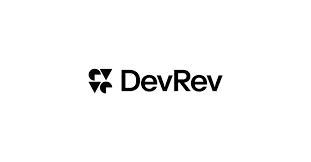Countering information asymmetry with AI
In the digital age, data is the new gold. However, how we work with data is far from optimal. In many organizations, we see information asymmetry, Martijn Bosschaart, Sunil Dutt and Patrick van Werken from DevRev note during their breakout session at the Leadership in Digital conference on March 28th. And that can cause serious problems.

Information asymmetry essentially means unequal access to information within an organization, Dutt explains. In other words: not everyone has access to the same data. Bosschaart illustrates this with an example from his own experience: "The product owner lives in Jira [a project tracking tool, red.], I live in Salesforce. Those two were not connected and had nothing to do with each other. That gives you completely different views of the same thing: the customer."
Information asymmetry has significant consequences. "It leads to inconsistent access to information across teams, silencing quieter yet more knowledgeable team members, creates group thinking and hierarchical biases," Bosschaart notes. "The consequences: inefficiencies, misalignment and poor strategic outcomes." Or, as Dutt puts it: "You start developing things that don't always correspond with the market demands."
Getting data out of silos
So how do you fix information asymmetry? It starts with breaking down the silos the data lives in. And with data, DevRev means all data, including conversations on Slack and material saved in Google Docs.
AI can be a huge help in this. "AI needs a shared understanding. You need a single view, with everyone looking through the same lenses. That is what AI can achieve," Bosschaart says. "AI can also work with all kinds of different data. You throw a bunch of text at it, and it'll find patterns in it."
You could achieve this with what we call a knowledge graph, which integrates data across departments, links customer feedback and includes engineering progress and product roadmaps. A knowledge graph forges relationships between all these data from different sources, creating a contextual view everyone can use.
Once you reach information symmetry, it's key to foster data-driven, collaborative decision making. Prevent that just the loudest voices make decisions. Instead, encourage contributions from all team members, regardless of their assertiveness, to amplify the expert voices. Only that way will you start making decisions that correspond with the market demands.
In many organizations, decision-making is hindered by information asymmetry, where critical data is unevenly distributed or even hidden in various tools and data silo’s across multiple departments. Would you like to know more, download this whitepaper.
By: Eveline Meijer

Reacties
Om een reactie achter te laten is een account vereist.
Inloggen Word abonnee